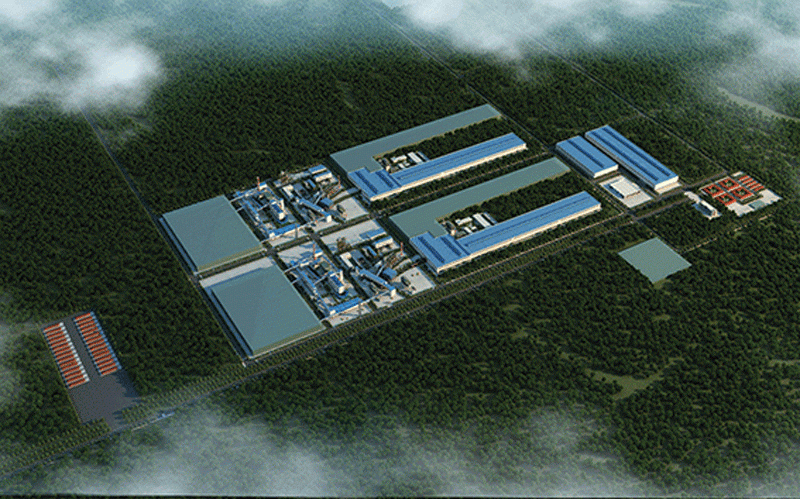
ZIMTRADE, the nation’s trade development and promotion agency, has pledged to support Dinson Iron and Steel Company (Disco)’s export strategy expected to see the country topping exporters on the continent.
Zimbabwe is tipped to become the largest iron and steel producer in Africa when the Manhize iron and steel plant starts producing over 20 million tonnes of carbon steel per annum in 2030.
Similarly, Dinson Colliery will produce 10 million tonnes of coke per year, including 1,5 million tonnes per year of all different types of fertilisers. The colliery will also produce 200 megawatts of methane gas.
While this production will meet domestic demand, the bulk will be earmarked for the export market.
“To ensure a soft landing on export markets for Zimbabwean iron and steel, ZimTrade will assist Disco in areas such as provision of market intelligence and linking with leading distributors in the region and beyond,” said the organisation in its latest report.
Speaking during a familiarisation tour of the Manhize iron plant by ZimTrade and other government departments recently, Disco managing director, Benson Xu said the plant will produce quality products that can perform well in the export markets.
“We are going to be the largest producer of iron and steel in Africa, and our products are of high quality. We believe that all countries require iron and steel in their construction and other projects, and we have a shot at the African market,” said Benson.
“This is where ZimTrade comes in, you are the experts, and we will benefit from your support in connecting us to the market. We are looking forward to your assistance in identifying strategic markets, understanding the specific market, and registering under trade agreements.”
- Chinese man gets 20 years in Rwanda for whipping a local man
- In Conversation with Trevor: ICT guru Stafford Masie speaks out
- In Conversation with Trevor: ICT guru Stafford Masie speaks out
- Africa’s ‘largest’ ferrochrome plant takes shape
Keep Reading
ZimTrade chief executive officer Allan Majuru said the potential for Disco to perform well on export markets is huge, once production starts.
“The demand for steel has been growing on the continent over the past few years and currently some of the top suppliers are coming from other continents,” he said.
“This places Disco at an advantage as distance to countries on the continent, especially southern Africa, will play an important role in landing Zimbabwe-produced iron and steel at competitive price.
“ZimTrade will assist Disco in identifying buyers, as well as their registration to trade under existing bilateral and multilateral trade agreements, as these have been put in place to ensure convenience when Africa trades with Africa,” Majuru said.
The iron and steel sector has been identified as a priority sector by the National Export Strategy (2019 to 2023).
Looking at the performance of the sector in the past, ZimTrade reckoned the potential for export growth cannot be doubted. At one time, the iron and steel sector used to be the backbone of the economy offering support to other sectors such as agriculture, transport, manufacturing and mining.
Products which dominated exports from the sector into the region and beyond included steel bars, metal sheets, boilers, bearings, pulleys, wire ropes, rail stock as well as agriculture and mining equipment.
Potential export markets for Zimbabwe-produced iron and steel include Zambia, Botswana, Angola, Democratic Republic of Congo (DRC), Malawi, Mozambique and Namibia.
According to Trade Map, Zambia imported iron and steel worth around US$226 million in 2020, with the majority coming from South Africa, China, Chile and India.
In terms of quantities, Zambia has been importing more iron and steel over the years, from around 58 000 tonnes in 2018 to around 81 000 in 2021.
In Malawi, most of the iron and steel imports, worth around US$83 million in 2021 came from China. Mozambique also imported, 111 000 tonnes of iron and steel in 2021, valued at around US$100 million.
Namibia in 2021 imported 26 000 tonnes of iron and steel worth around US$95 million. DRC imported around 46 000 tonnes of iron and steel worth US$126 million in 2021.
“All these countries … are just a snippet of the size of potential regional markets that will be serviced by Manhize Iron Steel Plant,” further read the Zimtrade report.
“Considering the proximity of these markets, and their current source markets, that are as far as Asia and Europe, there is no doubt that locally-produced iron and steel will compete well in the region.”










